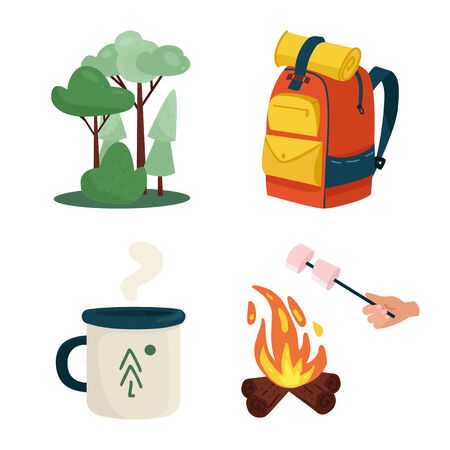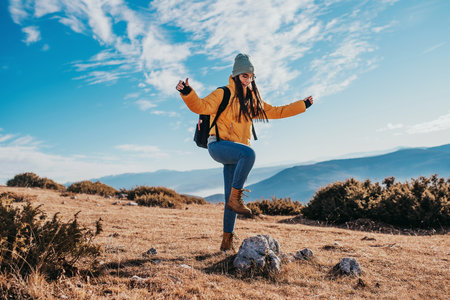Smart Food Storage and Cooking Tricks
When you’re out in the wild, keeping your food fresh and your meals simple can feel like a challenge. But with a little DIY spirit, you can outsmart both the elements and those pesky raccoons. Start by turning an ordinary cooler into a super-insulated food vault: line it with reflective emergency blankets and layer frozen water bottles inside to stretch your chill time for days. If you don’t have a cooler, improvise with a large bucket, some ice packs, and a towel to create a makeshift cold storage solution. For meal prep magic, assemble a DIY spice kit using empty Tic Tac containers or small pill organizers—label each one for no-fuss seasoning at camp. To keep critters at bay, stash your food in odor-proof bags and hang them from a sturdy tree branch, at least 10 feet off the ground and 4 feet away from the trunk—a trick that’s as American as s’mores around the campfire. Finally, pre-chop veggies and marinate proteins at home, storing them in zip-top bags so dinner can hit the skillet fast after a long day of hiking. These hacks are all about making campsite cooking easy, safe, and downright enjoyable.
Comfortable Sleeping Solutions
Getting a good night’s sleep outdoors is absolutely essential, and with a little DIY know-how, you can boost your comfort without lugging along bulky gear. Whether you’re a weekend warrior or a camping newbie, these creative hacks can help you stay warm, dry, and cozy through the night.
Improvised Mattresses
If you forgot your sleeping pad or want an extra layer of comfort, try these quick fixes:
| Material | How to Use | Best For |
|---|---|---|
| Extra Clothing | Stuff jackets, hoodies, or towels into a trash bag or pillowcase for a makeshift mattress. | Insulation and padding on uneven ground |
| Pine Needles/Leaves | Create a thick layer under your tent footprint (clear away sharp objects first). | Natural cushioning and insulation from cold ground |
| Yoga Mat/Foam Tiles | Repurpose home workout mats as portable sleeping pads. | Extra softness under your sleeping bag |
Sleeping Bag Upgrades
- Liner Hack: Add a fleece blanket or even an emergency Mylar blanket inside your sleeping bag for extra warmth—this trick is especially clutch during chilly spring and fall nights in the U.S.
- Zipper Fix: If your sleeping bag’s zipper tends to snag, run a bar of soap along the teeth before your trip to keep things moving smoothly.
- Pillow Upgrade: Fill a dry bag with clothes and use it as an adjustable pillow—no need to pack anything extra!
DIY Insulating Hacks
The key to staying warm is minimizing heat loss. Here are some tried-and-true American campsite hacks:
- Foil Emergency Blanket Under Tent: Place one under your tent floor to reflect body heat back up—super handy for shoulder-season trips.
- Socks-in-a-Bottle: Before bed, fill a water bottle with hot (not boiling) water, wrap it in a spare sock, and tuck it into your sleeping bag at your feet for all-night warmth.
- Tarp Canopy: Rig a tarp over your tent to create an extra barrier against dew and rain—staying dry is half the battle!
No More Cold Nights!
A comfortable campsite doesn’t have to mean fancy gear. With these DIY solutions, you’ll be prepped for whatever Mother Nature throws at you—and maybe even get bragging rights around the campfire. Stay creative and rest easy!

3. Lighting and Power on the Go
Keeping your campsite lit and powered after dark can be a real challenge, especially if you want to stay off-grid or avoid hauling too much gear. With some clever DIY hacks, you can create a cozy, functional space even when the sun goes down. Here are a few of our favorite solutions:
DIY Lanterns: Shine Bright with What You Have
You don’t need expensive lanterns to light up your camp. One tried-and-true hack is to strap a headlamp onto a translucent water jug—pointing the light inward—to create an instant area lantern that glows softly without being harsh on your eyes. Another option is to fill a mason jar with string lights powered by AA batteries or solar panels; not only does it look magical, but it’s also super portable and easy to set up.
Solar-Powered Charging Stations: Stay Connected, Sustainably
If you rely on your phone for maps, photos, or tunes, keeping it charged is a must. Invest in a small foldable solar panel that you can lay out during the day while hiking or lounging at camp. For an even more DIY approach, mount the panel onto a clipboard or inside a clear storage bin lid, then run USB cables into a weatherproof container to keep devices safe while charging. Bonus: add a rechargeable battery pack so you can juice up even when the sun isn’t shining.
Other After-Dark Essentials
- Wrap string lights around tent poles or hang them from trees for ambient lighting that won’t blind your fellow campers.
- Create glow-in-the-dark markers for tent lines and trails using reflective tape or glow sticks—no more midnight trip hazards!
- If you have kids (or just like fun), make glow jars by mixing glow stick fluid with water in sealed containers for instant mood lighting.
Pro Tip:
Always bring extra batteries and check your gear before leaving home. A bit of prep ensures you won’t be left fumbling in the dark—and lets you enjoy those late-night stories and s’mores in perfect comfort.
4. Keeping Campsite Clean and Organized
When you’re out in the wild, keeping your campsite tidy isn’t just about comfort—it’s about respecting nature, staying safe, and making your trip smoother. Here are some tried-and-true DIY hacks to keep your space clean and organized, using gear you probably already have or can repurpose from home.
Handy Storage Ideas for Gear
If you’ve ever spent ten minutes digging through your pack for a headlamp, these hacks are for you. Use clear plastic bins or mesh laundry bags to sort cooking tools, first aid supplies, and personal items. Label them with duct tape and a Sharpie for quick identification. Hanging shoe organizers (the kind that go over a door) can be hung from trees or your car to keep essentials off the ground and easy to grab.
DIY Storage Solutions Table
| Item | Use | DIY Hack |
|---|---|---|
| Mesh Laundry Bag | Store dishes & utensils | Hang for air-drying after washing |
| Shoe Organizer | Personal items & snacks | Hang from tree/vehicle for quick access |
| Clear Plastic Bin | Camping gear storage | Stackable & waterproof for rainy days |
| Coffee Canister | Small trash or food scraps | Lid keeps odor contained; use as mini compost bin |
Trash Management Tips
A messy site attracts critters and pollutes the environment. Bring heavy-duty trash bags and a five-gallon bucket as your main bin. Hang it on a tree branch away from your tent to keep animals at bay. For smaller items (like wrappers or used wipes), stash a resealable plastic bag in your daypack so you never leave litter behind on hikes.
Packing Out: Eco-Friendly Practices
- Always pack out what you bring in—even biodegradable items like orange peels can disrupt local ecosystems.
- If possible, separate recyclables in a different bag or box so you can drop them off back in town.
- Bring a small bottle of biodegradable soap and a sponge in a mesh bag for dish duty. Hang it up between uses to dry quickly and stay sanitary.
Staying Organized: Pro Tips
- Create a camp “landing zone” near your tent entrance—use a tarp or old sheet as a clean spot for shoes, backpacks, and jackets.
- Assign each camper their own color-coded stuff sack or tote for personal gear. This cuts down on confusion and lost items.
- Tidy up before dark every night—trust me, looking for gear with only a flashlight is no fun!
- If you’re camping with kids, give them simple jobs like collecting trash or sorting gear to teach stewardship early.
Tidying up as you go means less stress, more time around the campfire, and a lighter environmental impact—so try these hacks next time you pitch your tent!
5. Weatherproofing Your Campsite
Stay Dry, Stay Happy: Tarp Tricks and Shelter Smarts
If there’s one thing that can turn a good camping trip bad in a hurry, it’s unexpected weather. Rain, wind, or relentless sun—each can challenge your comfort and your gear. Luckily, you don’t need high-end equipment to stay protected. With a little creativity and some DIY know-how, you can weatherproof your campsite like a pro.
DIY Tarp Setups for Any Forecast
Tarps are the unsung heroes of any camping kit. For rain, string a tarp above your tent or communal area using paracord and sturdy trees to create a makeshift awning. Angle one side lower to allow water runoff. In windy conditions, secure tarps low to the ground as windbreaks by staking them down with rocks or repurposed tent stakes. For sun protection, hang a reflective tarp between trees over your chill zone—a classic backyard hack that works wonders at camp too.
Repurposed Items for Quick Fixes
No tarp? No problem. Large trash bags can be split open and used as emergency covers for gear or draped over backpacks. Old shower curtains make surprisingly effective ground cloths or rain barriers for entrances. Even spare ponchos can be clipped together with binder clips for makeshift walls or extra roof coverage if the skies really open up.
DIY Shelters: Beyond the Tent
If you find yourself needing more coverage, try building a lean-to shelter with fallen branches and your tarp (or even an emergency blanket). Stack rocks or logs at the base to keep things steady. Use zip ties or rope from your gear stash to lash everything together. This setup isn’t just useful for rain—it’s also a great way to escape harsh sun during midday hikes or provide an extra layer of insulation if the wind picks up.
Pro Tip: Keep Gear High and Dry
Don’t forget about your equipment! Elevate coolers, backpacks, and boots on logs or flat rocks to prevent soaking from ground moisture. If you have mesh laundry bags, use them to store small essentials and hang them from tree branches—this keeps them safe from puddles and curious critters alike.
With these simple but effective hacks, you’ll be ready to handle whatever Mother Nature throws at your campsite—without lugging around fancy gadgets or spending big bucks on specialty gear.
6. Pest Control and Safety Hacks
Keep Bugs at Bay with DIY Tricks
If you’ve ever been camping in the U.S., you know how relentless mosquitoes, ants, and flies can be. To avoid spending your night swatting at bugs, try making a simple citronella candle by melting wax and adding citronella oil—pour it into a jar with a wick for instant bug deterrence. For extra protection, sprinkle coffee grounds around your campsite’s perimeter; when burned lightly, the smoke repels mosquitoes. A spray bottle filled with water, a few drops of peppermint oil, and some witch hazel can also serve as an effective, all-natural bug spray.
Critter-Proof Your Campsite
America’s diverse wildlife means you’ll sometimes have to outsmart raccoons, squirrels, or even curious deer. Store food in airtight containers or hang it from a tree branch using paracord at least 10 feet off the ground and 4 feet away from the trunk. DIY critter-proofing tip: wrap aluminum foil around table legs or coolers—small animals dislike the texture and sound. Don’t forget to pick up all food scraps; a tidy camp is a safe camp!
Minor Injury Management
Scrapes, burns, and bug bites are part of the adventure but don’t have to ruin your trip. Pack a compact first aid kit with essentials: bandages, antiseptic wipes, tweezers (for splinters/ticks), and aloe gel for burns. For a quick ice pack, fill a ziplock bag with creek water and wrap it in a bandana. Got itchy bug bites? Make a paste of baking soda and water to dab on the area for soothing relief.
DIY Safety Know-How
Before heading out, memorize basic first aid steps and check park regulations about local wildlife. Leave a whistle in each backpack—three sharp blasts signal for help if needed. Teach everyone in your group where to find the first aid kit and emergency contacts list. With these practical hacks and safety smarts, you’ll be ready for almost anything Mother Nature throws your way.


